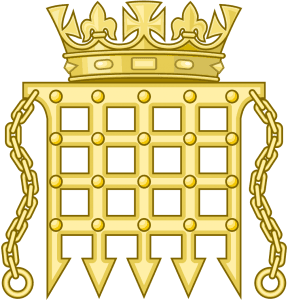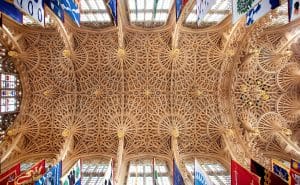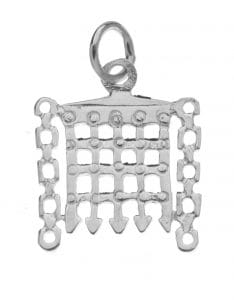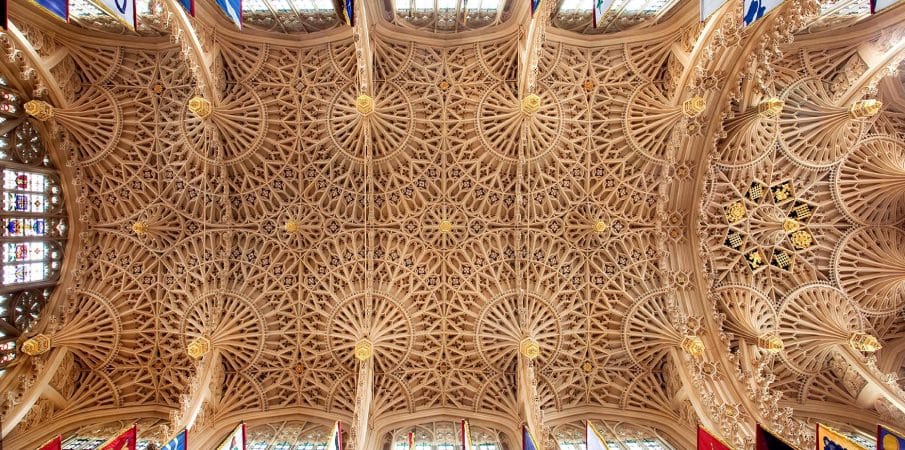At Mallards we love using architectural details to create bespoke souvenirs. Turning a portcullis, associated with castle defences, into a beautiful pendant was a challenge we couldn’t resist!

A portcullis, from the French porte coulissante, meaning sliding door, was a vertically-closing gate used as a rapid-response defence in medieval castles and other fortified buildings. A typical portcullis was made from latticed wood or metal, and was raised or lowered by winched chains or ropes. Sited above the building’s entrance, it could be quickly slid into position down vertical grooves in the walls. Occasionally, two portcullisis would be used, trapping unwelcome guests between them…
Medieval military architecture seems an unlikely starting point for jewellery design! However, the portcullis has come to be a frequently-occurring British symbol – including at Westminster Abbey.
Why was the portcullis emblem so popular? The portcullis was the heraldic badge of the House of Beaufort, legitimised royal descendants of John of Gaunt. Symbolising security, it was a powerful image of strength, and was also possibly a play on their name of Beaufort . However, its use in Westminster Abbey was to establish the historical authority of the new Tudor dynasty. Henry VII’s mother was Margaret Beaufort, and Henry made great use of her family emblem to emphasise his royal descent – an essential badge of legitimacy for a monarch who had overthrown the long-standing Plantagenet rulers.

Henry oversaw (and financed) the building of the Lady Chapel in Westminster Abbey, construction of which began in 1503. Henry, his queen, and his mother are all buried here, as are Queen Elizabeth I and her half-sister Mary I. As befits a chapel with such royal connections, it is a beautiful space, lavishly decorated. It is renowned for its spectacular fan-vaulted ceiling, which features an intricate design, including the portcullis badge.
The portcullis symbol was adopted by Sir Charles Barry when he rebuilt the Palace of Westminster in the nineteenth century – he used it literally thousands of times in the architectural details of the Palace. From this, it became the symbol of Parliament, both in London and across the Commonwealth. We see it on older one penny coins, and it was used by Customs and Excise. There are variations – sometimes it’s crowned, sometimes it has chains, and the position of these chains varies. However, it was the ceiling badges in the Lady Chapel that inspired our bespoke souvenir pendant. Made from sterling silver, we wanted to get the detail right as well as the distinctive shape. The latticed gate has the correct twenty tiny rivets, and we’ve chosen the variant with the straight-hanging chains on either side. Instead of a crown, there is a link at the top to enable it to be threaded onto a chain.

This is what we’re all about at Mallards – taking an architectural detail or symbol, and fashioning it into a charming and unusual memento. The portcullis pendant is a great example of this, and we’re sure it will be popular when it goes on sale at Westminster Abbey’s shop.
Do you have an emblem or detail that you’d like us to make into a bespoke souvenir for your attraction? To find out more about Mallards and our work, please contact us.
